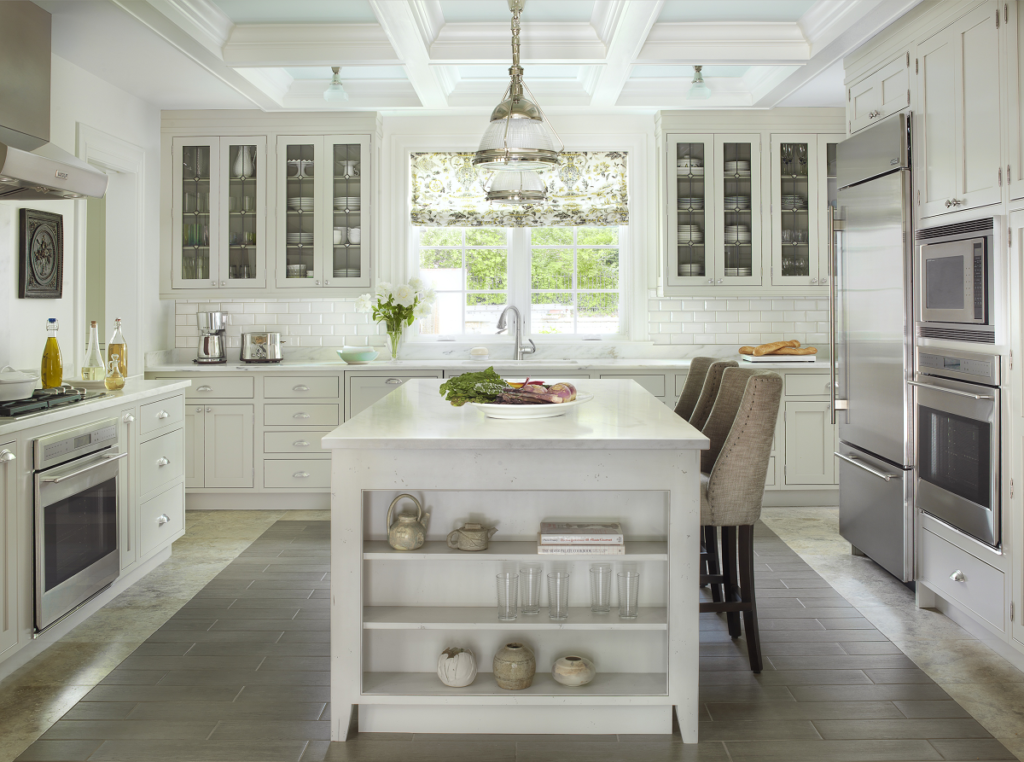Make Your Dream Kitchen a Reality

Embarking on a kitchen remodeling project is an exciting endeavor, but in order to make your dream kitchen a reality, there are a few steps you need to take first.
Create a wish list
Think about how you use your kitchen now: what works, what doesn’t, what could be better. Think about how you and your family use your kitchen now, and how you might use it in the future. Is your current kitchen too small for your growing family? Do you want a kitchen that allows you to host more social gatherings?
Think about the features you’re absolutely going to need to have, things like cabinets, flooring and lighting, but also indulge in thinking about the upgrades you might like to have. Do you find yourself in need of a second oven? Do you entertain frequently enough to warrant having a wine fridge?
In some cases, you might not know what you want (or think you need) until you see it. This is where social media comes in. Create Pinterest boards or Houzz idea books for your new dream kitchen. These tools are great to help you find inspiration and organize your ideas for your kitchen renovation (or the renovation of any room in your house, for that matter). While you’re browsing, make sure you’re not just saving any image you like. Make a note when you save or pin an image and write down what you like about it. Is it the colors, the cabinets, the design style, the backsplash? This will be helpful when recalling this wish list later with your architect or interior designer.
Think about your budget
Before you get too carried away in the Pinterest phase of planning, it’s important to identify what your budget is for this project. To get a realistic idea of what you might spend, talk to friends, family or neighbors who have had recent remodels done. It’s good to get a picture of what you might spend – and what you know you can’t spend – so you know what expectations to set for the architect, interior designer or contractor you plan to work with.
Remember also that if you plan to sell your house anytime soon, the money you spend on a kitchen remodel is an investment that can often lead to a higher resale value for your home, meaning you might recoup some of the costs.
Select your interior designer
When selecting your interior designer or architect, first gather a short list of firms that have good reputations. Ask others who have had recent remodels done who they talked to and who they liked or ended up choosing. Make sure the firms have been properly vetted. Look at their websites or other media and see if you like their style or if they have experience with an interior design aesthetic similar to the one you have in mind.
When you’ve narrowed your list of possible candidates, set up times to discuss your project with each. See who best understands your goals and vision and seems like they would be the best partner to you throughout this project. It’s important to select someone who understands what you want and whom you can trust to execute your dream.
Set a realistic timeline for the project
Your interior designer or architect can help with this. Going through a remodel, especially in an area of your home that is as frequently used as the kitchen, is not an easy process. Work with your architect or interior designer to set a realistic timeframe for the project.
Once you have these essential parameters of the project in place, you’ll be well on your way to make your dream kitchen a reality.
